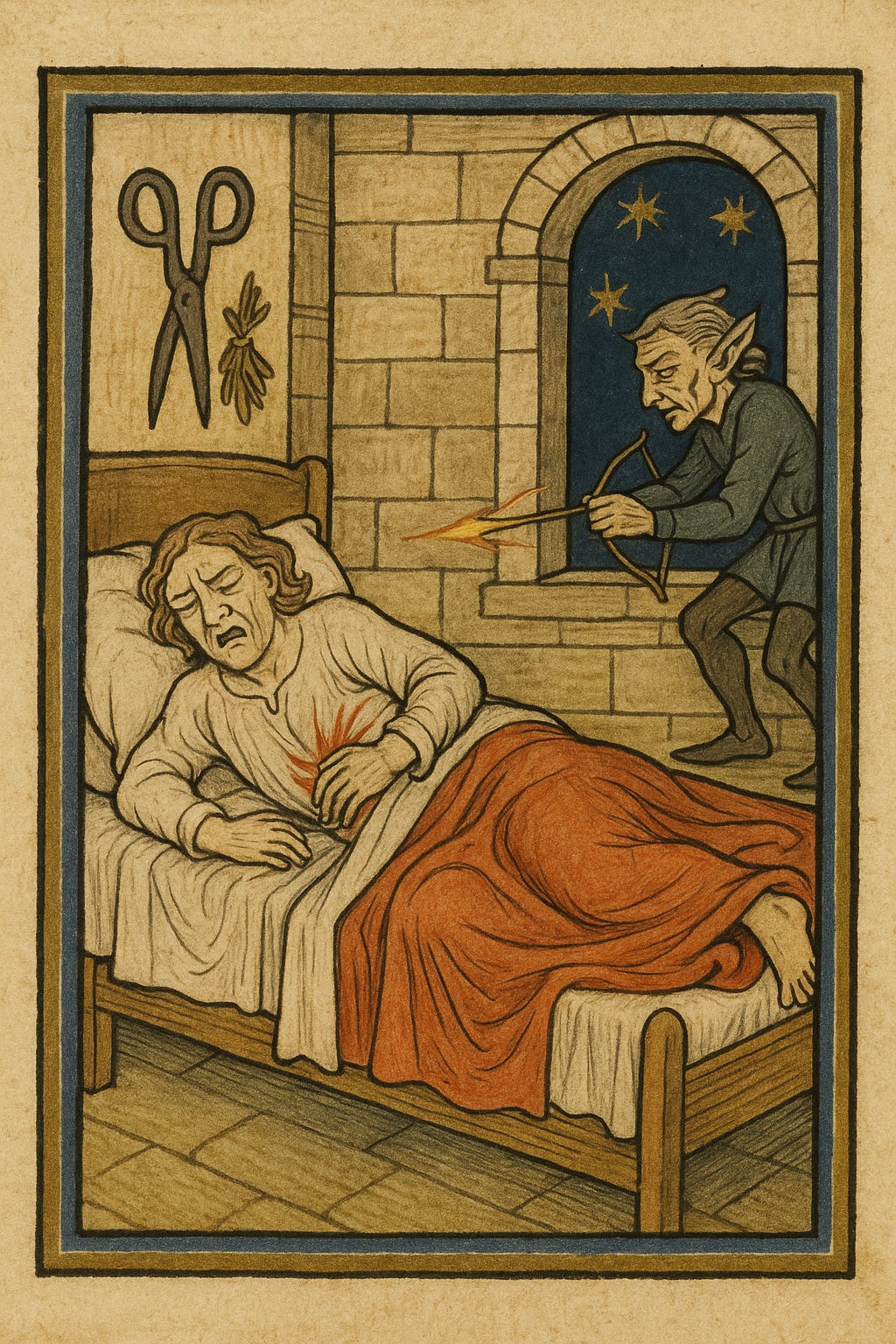📂Folklore Files: Elf-Shot
How Northern English Folk Believed Invisible Elves attacked, and sometimes killed.
In the windswept moors of Northumberland, Northern England, a woman woke in the night screaming — her leg in agony, the flesh red, swollen and hot, yet with no visible wound. “The elves have found her,” the neighbours whispered. “Struck by elf-shot.”
They would have known what to do: bring rowan, burn herbs, hang iron at the bedstead. To them, the world was full of invisible enemies — and none more feared, more hated, or more dreaded than the elves.
This is the forgotten history of how invisible beings were blamed for sudden pain, and how their legacy still echoes in language, ritual, and rural memory.
A huge thank you to for supporting my work.
Elves, but not as you know them
Long before the Victorians made them delicate and dainty, the elves of Northern folklore were dangerous, unseen, and often cruel. In Anglo-Saxon England, they were known as ælfe — beings that lived parallel to our world, occasionally crossing over not to play or prank, but to harm. People feared them as one would fear an unseen assassin: you couldn’t see them, but they would leave suffering and death in their wake. You didn’t want to stand out. You didn’t want to catch their attention. You didn’t want to be noticed at all.
To be "elf-shot" was to be spiritually wounded, often without physical mark. The pain came in bolts — sharp, burning, or stabbing. The result? Crippling aches, fatigue, or even paralysis. Cattle were struck down too, with farmers blaming elves for spoiled milk, limping beasts, or stillborn calves. To be targeted by the elves was not bad luck — it was an act of aggression.
Folk medicine had a name for it: elf-shot
And a treatment — if you could afford one.
People collected flint arrowheads from the ground, believing them to be discarded elvish weapons. In truth, these were prehistoric tools — real arrowheads and spear tips made by Neolithic, Bronze Age, or Iron Age people thousands of years earlier. Having lost all knowledge of their human origin, rural communities interpreted these ancient artefacts as physical evidence of supernatural attacks. Some wore them as amulets to repel future attacks. Others sought cunning folk — those who could divine the cause, offer charms, or extract the invisible arrow by ritual means.
The pain was real. The cause was invisible. The solution was magic. And that magic was a desperate defence against an invisible war waged from the unseen world.
Roots in older magic
Elves weren’t always cruel. In older Norse belief, the álfar were complex — not unlike ancestors or nature spirits. But as Christianity spread, elves were demonised. In medieval texts, they became whisperers of madness, servants of witches, or solitary predators who attacked from shadow.
In one Old English charm, the speaker tries to heal someone by naming and driving out the elf-arrow:
“Out, little spear, if herein it be!”
This wasn’t metaphor. It was ritual incantation, repeated like a spell — not to comfort, but to fight back.
A lingering ghost in modern language
We still say "shooting pain" or "stabbing pain" without thinking about it. But those phrases are the fossilised remains of a once-universal fear: that sudden pain came not from nerves or stress, but from a hidden elf's blade.
Even today, some folk traditions carry the old defences — iron under pillows, rowan on doorways, or turning your clothes inside-out to confuse spirits. We no longer believe, perhaps. But we still do.
So what were the elves, really?
A way to understand suffering? In a world without medicine or diagnosis, elf-shot explained the inexplicable.
A cultural memory of older spirits? Some scholars believe the elf represents a degraded memory of ancestor worship or land spirits.
Or simply a warning? That we are never alone — and that pain sometimes comes from places we cannot see, or name.



